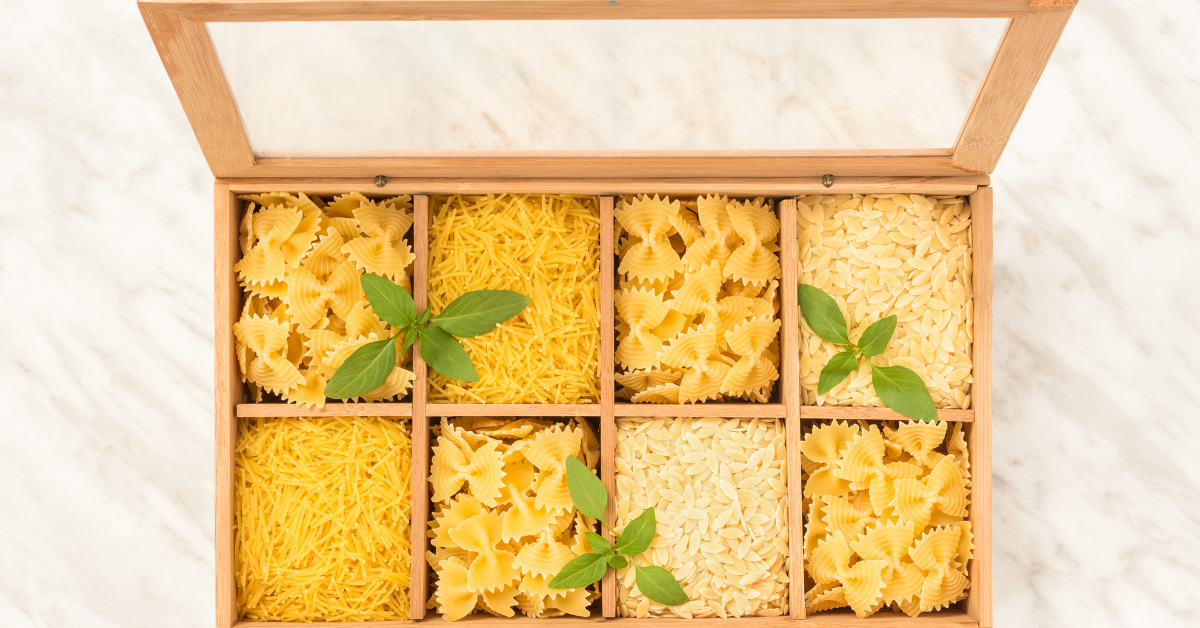Preppers do not only come from the backwoods or other rural areas of the country. There are also entire networks of urban preppers who are focused on preparing themselves and their families to survive in the event of a natural or human-triggered disaster in the city—and for good reason.
Many unique obstacles come with living in a city and trying to survive in the aftermath of a disaster. In many ways, urban survival preparedness is just as crucial as learning how to survive in the wilderness.
Urban prepping should not be underestimated. That is why we’ve put together this article outlining helpful tips and tricks for urban preppers. So keep reading if you want to improve your urban survival preparedness and be ready for anything.
Unique Challenges for Urban Prepping
Urban preppers face unique challenges when it comes to urban survival preparedness. Therefore, those who live in larger cities or suburban areas must take extra precautions to be prepared for when sh*t hits the fan (SHTF).
Seven unique obstacles must be accounted for when talking about urban prepping:
- Population density
- Limited natural resources
- Reliance on municipal water and energy
- Limited living and storage space
- Transportation
- Communication
- Civil unrest
Urban Population Density
Cities and suburbs are crowded places. For example, in Los Angeles alone,there are roughly 7,009 people per square mile. On the other hand,less populated states like Wyoming only have six people per square mile.
For larger cities and in the aftermath of a natural disaster like an earthquake, there will surely be challenges from too many people trying to survive in a relatively small area. Hospitals and urgent care facilities will fill up, evacuation routes will get clogged, gas stations will run out of fuel, and grocery stores will be overrun.
Therefore, urban preppers need to be self-reliant and prepared to take on the challenges of surviving in a crowded urban space without help from the local government, disaster relief agencies, or other people.
Limited Natural Resources
Cities have very limited natural resources, if any at all. When city dwellers need food, they purchase it from the store. Very few people will harvest, forage, hunt their food from the wild, or grow a small home garden.
On the other hand, folks who live in more rural areas typically have the space and skill set to grow their food and raise animals for food. They also can forage and hunt off the land on or around their property.
Reliance on Municipal Water & Energy
People who live in cities are also reliant upon municipal water and energy. They cannot draw water from the well on their property, or local rivers or lakes. In a disaster, city water and power may become unsafe or unreliable. Therefore, individuals who have not focused on urban survival preparedness will be cut off.
Limited Living & Storage Space in Urban Areas
Prepping takes up a lot of space. Some of the most avid preppers have entire basements, shelters, and pantries full of emergency food, water, and other equipment.
[product_render product-handle="entree-bucket"]
However, this is not the case for people living in crowded cities. Those who live in cities already have limited living space. Property sizes are relatively small, and they are surrounded on all sides by other homes or buildings. This means that they have limited storage space as well.
Transportation
If you live in a city, then you already know how much of a hassle transportation can be on a regular day. Now imagine how that might worsen after a hurricane strikes and floods the city, or if politically frustrated mobs and rioters clog up the city’s streets.
Therefore, having multiple reliable modes of transportation and an effective evacuation plan that includes backup escape routes could mean all the difference if you must leave the city in a hurry.
Communication
Cities often struggle with power grid failures during and after a disaster strikes. As a result, cell phone reception and internet connection often become unreliable. This makes communicating with friends and family very difficult—not to mention it cuts you off from important news and notifications from local leaders and disaster relief specialists.
That is why finding ways and having the tools to stay connected and keep your devices charged is so essential for urban survival preparedness.
Civil Unrest
Unfortunately, cities can become unruly and unsafe places when SHTF. People become crippled by fear and panic, and sometimes resort to committing crimes. In some cases, city dwellers often don’t know most of their neighbors and have a hard time trusting one another. As a result, they find it easier to act selfishly instead of helping one another in the aftermath of a disaster.
Tips and Tricks for Urban Prepping

To address the unique challenges of living in a larger city and preparing for emergency scenarios, we wanted to offer some tips and tricks for urban and suburban prepping. As you enhance your urban survival preparedness, we recommend incorporating these tips into your urban prepper survival plans.
Make More Space
In an urban environment, space is limited. So you have to be creative with how you take advantage of the space you have. In addition, you need to optimize every nook and cranny if you want to be properly prepared for various emergencies and disasters.
-
Utilize the space underneath the beds in your home.
-
Decorate your home with versatile furniture, like two-in-one ottomans and coffee tables.
-
Hang up your tools and other supplies on an organized pegboard.
-
Take advantage of vertical space with floor-to-ceiling storage solutions.
-
Mount heavy-duty and sturdy shelves to empty wall space to accommodate more items.
-
Use the top of the refrigerator for stashing important supplies.
-
Optimize every inch of storage space you already have. For example, install a cabinet in the hallway coat closet underneath the hanging items.
- Invest in multi-purpose items that take up less space and do multiple jobs, like multi-tools.
Prepare Emergency Food and Water
Emergency food and water are two of the most important components of any urban survival preparedness plan. When grocery stores become looted and unreliable, you will need to have a way to keep your family hydrated and fed.
Bulk freeze-dried food is unbeatable regarding nutritious and reliable emergency food. The best products boast a25-year shelf life, so you can purchase your food well ahead of time and not have to worry about it spoiling before using it.
A plan forwater storage is also crucial for urban prepping. For example, you do not want to go thirsty if the municipal water source gets shut off or becomes unsafe due to chemical warfare or other disasters.
Grow a Garden
Consider growing an urban garden to account for supply chain problems, food shortages, and empty grocery stores. We know space is limited in cities and suburbs, but there are many ways to maximize space and grow fantastic food withsmall vegetable garden ideas.
Besides growing fresh food in your survivalist garden, we recommend preserving your delicious harvest. Dehydrating, canning, drying fresh herbs, and pickling your produce are all fantastic ways to make your food last longer.
Harvest Rainwater
Having a rainwater collection system for harvesting rainwater is an ideal way to ensure self-sufficiency during water emergencies, especially for off-grid living situations where access to conventional water sources may be limited. This system provides reliable off-grid water for various tasks such as drinking, cooking, and small-scale gardening, thereby promoting sustainable living practices.
As an example, let’s present a hypothetical scenario. A 2,000-square-foot roof can collect 1,120 gallons of water for every inch of rainfall. So if that house was located in an area with an average of 25 inches of rain per year, it could collect upwards of 28,000 gallons of rainwater!
Calculating the rainwater collection potential of your roof is not too difficult. And the collection systems are relatively affordable and can help you survive.
Have a Backup Plan For Power
If the emergency event is particularly severe, the municipal power may get knocked out. In this case, the power grid will fail, and thousands, if not millions, of people, will be left cooking without electricity.
Therefore, having a plan for backup power is an important piece of urban survival preparedness if you don’t want to get caught in the dark.
- Rechargeable batteries
- Portable generators
- Solar panels and solar-powered devices
- Auxiliary charging batteries
- Candles
- Battery- or gas-operated lanterns
Solidify an Effective Evacuation Plan
Every urban prepper should have an effective evacuation plan. Evacuation plans should include details about how to get out of the house in the event of a fire, get out of the city, and where a secure bug-out location would be.
In a hectic urban scenario, your evacuation plan may prove impossible. That’s why we recommend having backup routes and modes of transportation just in case. In the worst-case scenario, you should also be prepared to grab yourbug-out bag and evacuate on foot.
Get to Know Your Neighbors
It’s difficult to get to know every single neighbor in your community. But we recommend you try to make friends with the neighbors in your immediate vicinity. In a disaster, you may need to interact with them. You may help them, or they might lend a helping hand to you.
And who knows, you might find out they are urban preppers also. In this case, you might considercreating a prepper community with them to pool resources and survival skills so you can better survive a disaster.
Prep Bug-Out Bags in Your Vehicle
You never know when disaster might strike. It could be while in your vehicle, commuting to and from work, or running errands around town. That is why we recommendprepping a bug-out bag in all of your cars.
Having emergency supplies in your vehicle at all times is helpful when you are stranded in your vehicle or if you have to leave your vehicle behind to get to a safer area. Plus, they can help if you get into a car accident or if you observe an accident and decide to provide help.
Learn Basic First Aid & Prep Medical Supplies
Unfortunately, after a severe disaster, first responders, hospitals, urgent care facilities, and other medical providers may become overrun and unavailable. There are simply not enough healthcare professionals for everyone in the city.
Therefore, having a basic understanding of first aid and the necessary tools to provide first aid in an urban environment is essential. We recommend you also consider preparing a cache of critical over-the-counter medications and prescriptions, in case pharmacies become unreliable.
The 10 C’s of Urban Survival

There are many different ways to think about urban prepping. One of the best strategies is to focus your attention on the10 C’s of urban survival.
- Cash – Cash is king, especially when the internet is down and credit or ATM cards become unusable.
- Crowbar – Crowbars or other prying tools can help you escape from a room after an earthquake or help someone escape a vehicle.
- Charging Tools & Cables – Your cellphone and other devices will be rendered useless if you cannot keep them charged.
- Cleanliness and Care – Self-care and first aid are vital for maintaining high morale and staying healthy in survival situations.
- Comms – Staying connected to important news updates, your loved ones, and your prepper community is critical for survival.
- Clothing – The proper attire for the climate and remaining warm and dry during survival scenarios should be a top priority.
- Chow – Ready-to-go, nutritious survival food like freeze-dried meat, fruits, and storing garden vegetables can keep you and your family fed when grocery stores cannot.
- Clean Water – Clean water is imperative and needs to be prioritized in your urban survival preparedness plan.
- Canister Filter Gas Mask – In a disaster scenario, the air may become unsafe to breathe, like in a structure fire, pandemic, or chemical warfare.
- Charting Tools & Compass – When all other technologically advanced navigation tools inevitably fail, you will be glad you can still navigate and know where you are with a map and compass.
Final Thoughts
Many benefits come from living in a big city or surrounding suburb. However, there are also many obstacles associated with urban living, especially if SHTF after some sort of natural disaster or political unrest.
That is why urban prepping is so important and why preppers should not underestimate it. So if you live in a larger metropolitan area, we implore you to start prepping. The above tips and tricks will better prepare you for the unexpected. You will not be disappointed.
To learn more, visit ourPractical Prepper Blog. Or to speak with one of our product experts,please visit our webpage.




